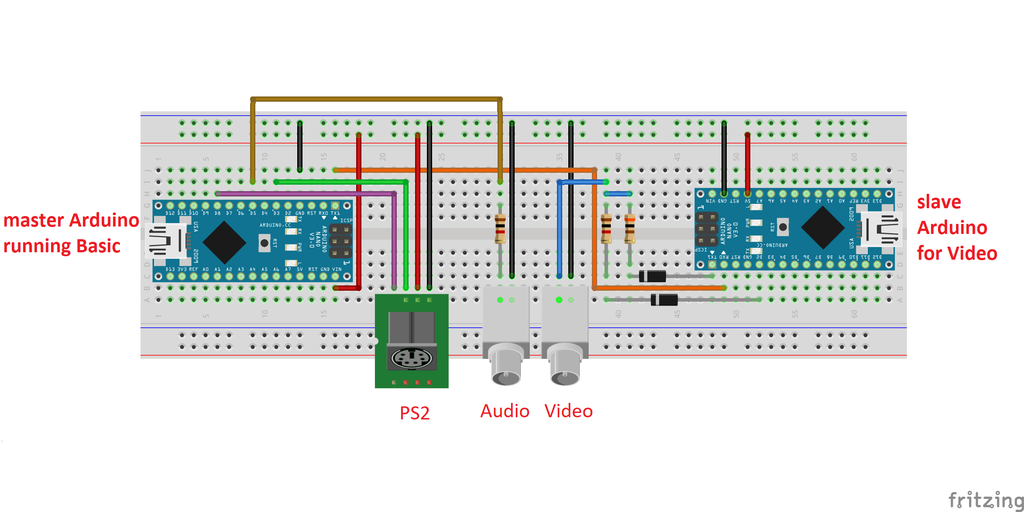Welcome to our blog post where we dive into the fascinating world of PCBA thickness! If you’re curious about what exactly PCBA is and why its thickness matters, you’ve come to the right place. Whether you’re a tech enthusiast or simply interested in understanding more about the inner workings of electronic devices, this article will provide you with valuable insights. So let’s get started and unravel the mystery behind the pcbasic.
What is a PCBA?
A PCBA, short for Printed Circuit Board Assembly, is a crucial component of electronic devices. It serves as the foundation that connects various electronic components and enables them to function together seamlessly. In simple terms, it’s like the nervous system of your device, transmitting signals and power between different parts.
The PCB itself is a flat board made of non-conductive material with conductive pathways etched onto it. These pathways act as circuits through which electrical signals flow. The process of assembling these components onto the PCB is what creates a PCBA.
PCBAs come in various shapes and sizes depending on the specific device they are designed for. They can range from tiny boards found in smartphones or wearables to larger ones used in computers or industrial equipment.
The design and layout of a PCBA play a critical role in determining its functionality and performance. Components such as resistors, capacitors, microchips, connectors, and more are meticulously placed on the board following precise specifications.
Without PCBA technology driving our devices forward, we wouldn’t have the convenience and capabilities we enjoy today. So next time you pick up your smartphone or turn on your computer, take a moment to appreciate the complex beauty that lies within – courtesy of PCBA!
The standard thickness of a PCBA
The standard thickness of a PCBA, or Printed Circuit Board Assembly, can vary depending on various factors such as the components used and the specific requirements of the project. However, there are some common industry standards that can provide guidance when it comes to choosing the right thickness for your PCBA.
Generally, PCBAs come in different thickness options ranging from 0.6mm to 1.6mm. The most commonly used standard thicknesses include 0.8mm, 1.0mm, and 1.6mm.
When deciding on the appropriate thickness for your PCBA, it’s important to consider factors such as component density and mechanical stability. Thicker boards often offer better rigidity and durability, which is beneficial for applications that require extra strength or resistance to vibration.
On the other hand, thinner PCBAs can be advantageous in situations where space is limited or weight reduction is a priority. Thin boards are also more flexible and can be suitable for applications with tight bending requirements.
Selecting the right thickness for your PCBA involves finding a balance between functionality and practicality based on your specific project needs
How to choose the right thickness for your PCBA
When it comes to choosing the right thickness for your PCBA (Printed Circuit Board Assembly), there are several factors to consider. The thickness of a PCBA can have a significant impact on its performance and durability. Here are some key points to keep in mind when making this decision.
You need to consider the size and weight constraints of your project. If space is limited, opting for a thinner PCB may be necessary in order to fit within the designated area. On the other hand, if you have more room to work with, a thicker PCB can provide additional layers and components without compromising on functionality.
Another important factor is the electrical requirements of your circuitry. Thicker PCBs tend to offer better heat dissipation and improved signal integrity, which can be crucial for high-power applications or designs that require precise voltage regulation.
Additionally, it’s essential to consider manufacturing capabilities and cost implications. Thinner PCBs are generally easier and cheaper to produce due to reduced material usage and shorter production cycles. However, thicker boards may offer increased mechanical strength and resistance against bending or warping during assembly or operation.
Selecting the right thickness for your PCBA involves striking a balance between all these considerations based on your specific project requirements. Consulting with an experienced PCB manufacturer can also provide valuable insights into material options and design guidelines tailored specifically for your needs
The benefits of a thicker PCBA
When it comes to printed circuit board assemblies (PCBAs), thickness plays a crucial role in determining their functionality and durability. A thicker PCBA offers several advantages that make it an appealing choice for many applications.
A thicker PCBA provides better heat dissipation. With more layers and increased surface area, the PCB can efficiently dissipate heat generated by components during operation. This is particularly important for devices that require high power or operate in demanding environments.
A thicker PCBA offers improved mechanical strength. The additional layers add rigidity to the board, making it less prone to flexing or bending under stress or vibration. This enhanced structural integrity ensures the longevity and reliability of the PCB assembly.
Furthermore, a thicker PCBA allows for easier installation and handling. Thicker boards are less likely to warp or bend during manufacturing processes such as soldering or reflow, reducing the risk of damage and ensuring proper alignment of components.
In addition, a thicker PCBA provides more space for routing traces and placing components closer together without interference. This allows for denser designs with reduced signal loss and improved overall performance.
A thicker PCBA can offer better electromagnetic compatibility (EMC) shielding capabilities. The increased thickness helps attenuate electrical noise and reduces interference from external sources that could impact sensitive electronic components on the board.
Choosing a thicker PCBA brings numerous benefits including improved heat dissipation, mechanical strength, ease of installation/handling, design flexibility, and electromagnetic compatibility shielding capabilities
The benefits of a thinner PCBA
When it comes to printed circuit board assemblies (PCBAs), the thickness plays a crucial role in determining its performance and functionality. While thicker PCBAs have their advantages, there are also several benefits associated with opting for a thinner variant.
One major advantage of using a thinner PCBA is the reduced weight and size. This can be particularly beneficial in applications where space is limited or weight needs to be minimized, such as in portable electronic devices or aerospace equipment. A thinner PCBA allows for more compact designs without sacrificing performance.
Another benefit of choosing a thinner PCBA is improved thermal management. Thinner PCBAs tend to dissipate heat more efficiently due to their lower thermal resistance. This helps prevent overheating issues and ensures better reliability and longevity of the electronic components.
Additionally, thinner PCBAs often offer better flexibility, making them suitable for applications that require bending or shaping. They can withstand mechanical stresses without compromising electrical connectivity, making them ideal for wearable devices or automotive electronics that may experience vibrations or movements.
Furthermore, cost-effectiveness can be achieved by opting for a thinner PCBA as they generally require fewer materials during production. This not only reduces manufacturing costs but also lowers shipping expenses due to their lighter weight.
While thicker PCBAs have their own advantages in terms of durability and robustness, choosing a thinner option offers benefits like reduced weight and size, improved thermal management, enhanced flexibility, and cost-effectiveness – all contributing factors when designing advanced electronic systems.
Conclusion
In this article, we have explored the important aspects of PCBA thickness. We started by understanding what a PCBA is and its significance in various electronic devices. Moving on, we learned about the standard thickness of a PCBA and how it can vary depending on the specific requirements of the application.
Choosing the right thickness for your PCBA is crucial as it directly impacts its performance and reliability. Factors such as space constraints, thermal management, and signal integrity should be considered when making this decision.
A thicker PCBA offers several benefits including improved mechanical strength, enhanced heat dissipation capabilities, and reduced risk of damage during handling or assembly processes. On the other hand, a thinner PCBA allows for greater miniaturization and flexibility in design.
There is no one-size-fits-all answer to what thickness is ideal for every situation. It depends on the unique needs of your project and careful consideration of various factors involved.
If you’re unsure about which thickness to choose for your PCBAs, consulting with an experienced manufacturer or engineer can provide valuable insights and guidance based on their expertise.
In conclusion (without explicitly stating so), understanding the importance of choosing an appropriate PCB thickness helps ensure optimal performance and reliability in electronic devices while considering specific design requirements. So next time you embark on a PCB assembly project or need to optimize an existing one, remember that size does matter – even when it comes to printed circuit board assemblies!





























